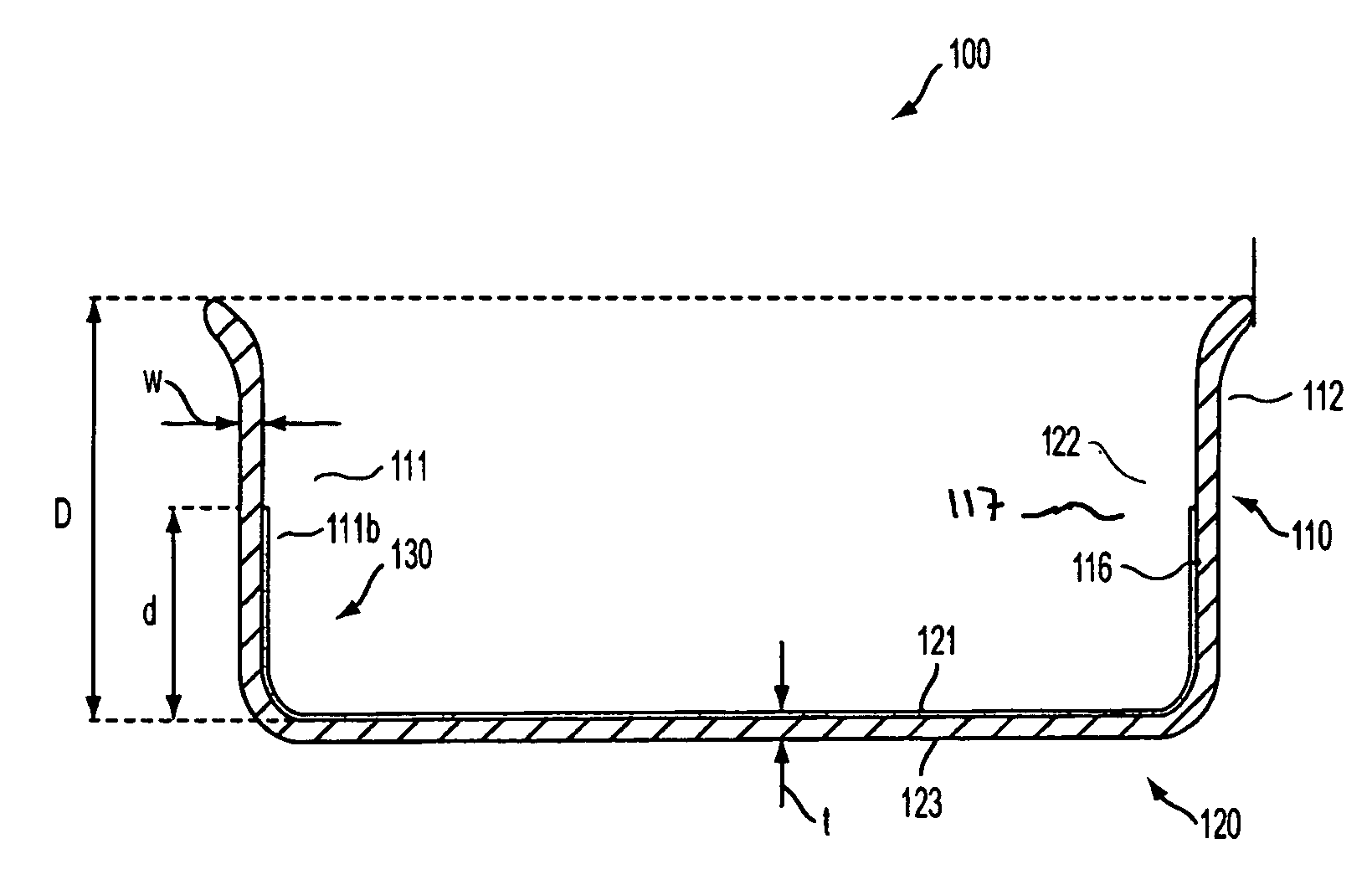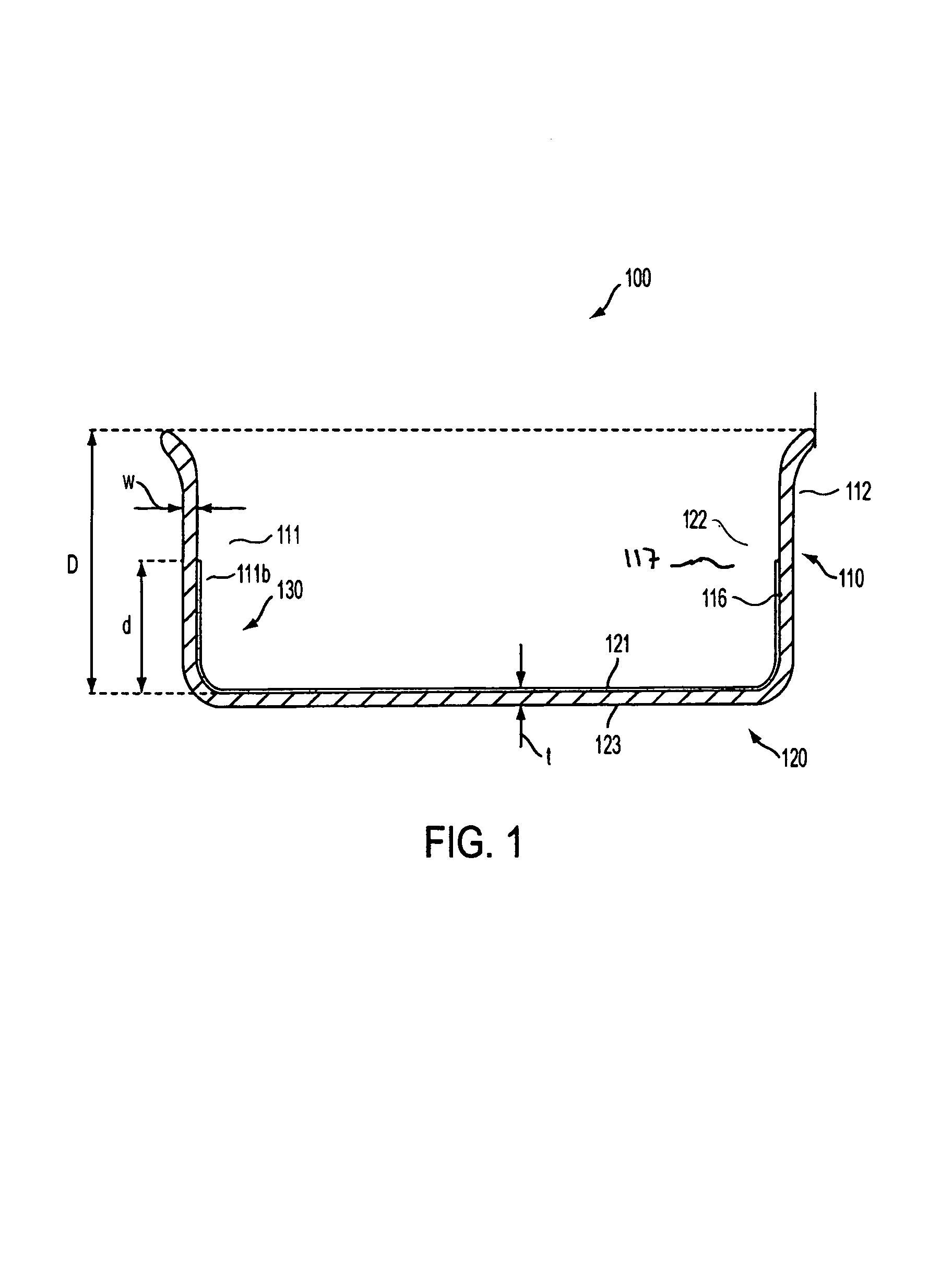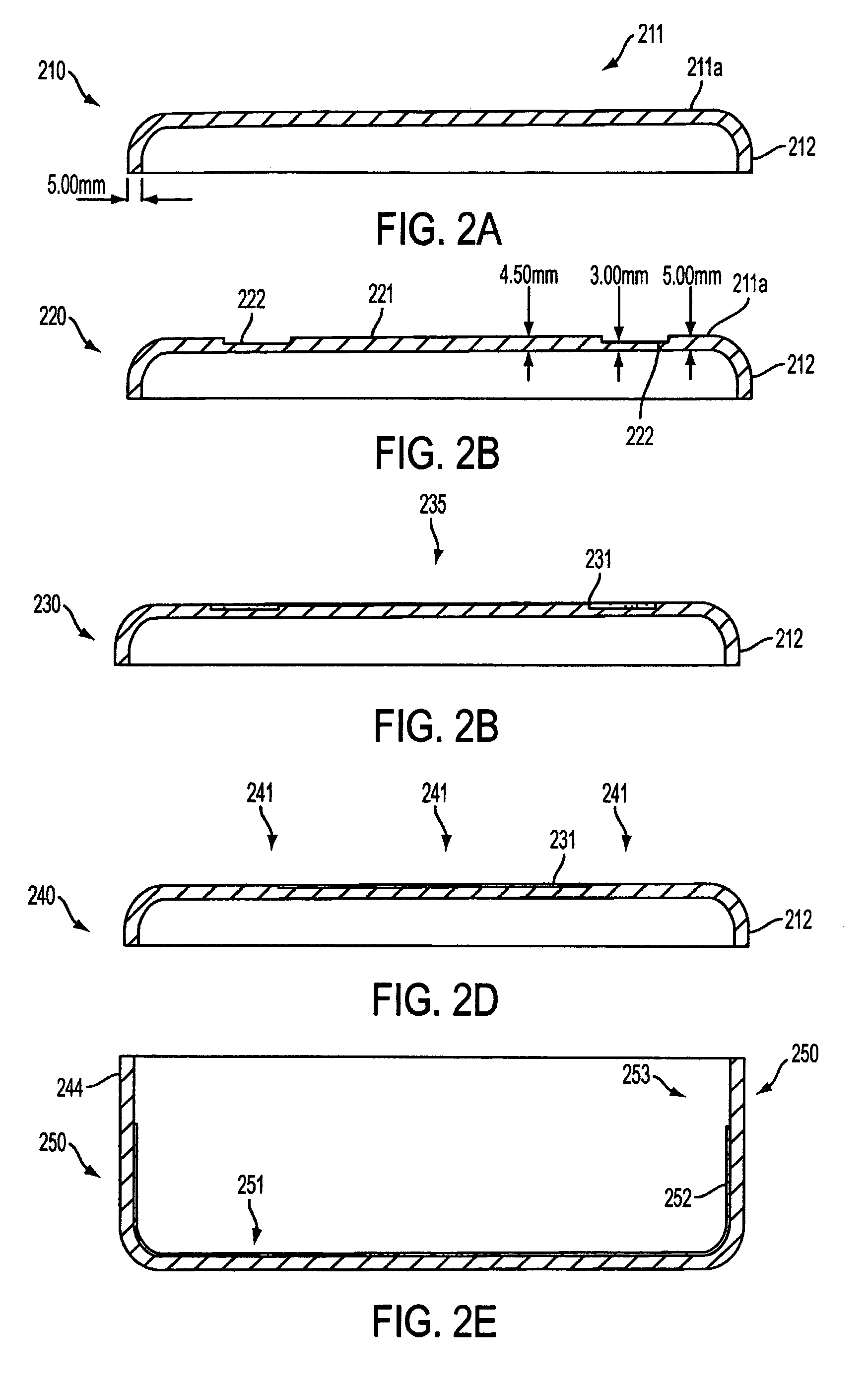Method of fabricating titanium lined composite cookware
a composite cookware and titanium technology, applied in the field of improved cookware, can solve the problems of easy staining and tarnish, easy combination with non-anodized aluminum exterior, and disadvantages for some consumers, and achieve the effect of restoring to a bright metallic finish
- Summary
- Abstract
- Description
- Claims
- Application Information
AI Technical Summary
Benefits of technology
Problems solved by technology
Method used
Image
Examples
Embodiment Construction
[0013]In accordance with the present invention, FIG. 1 illustrates the construction of a composite cookware vessel 100 having substantially vertical or upstanding wall 110 disposed about and connected to a heat-conducting base or bottom portion 120, thus forming a fluid retaining container with an open top. The one or more handles that are conventionally disposed on the outer surface of cookware are omitted merely for clarity. The outer portion 112 of the walls 110 is constructed of aluminum, or an alloy thereof, whereas a lower portion 111b of the interior wall 111 is titanium or an alloy thereof. The construction of the wall with a lower portion 111b presenting a titanium surface is achieved by fabricating the pan with a titanium liner 130 which cover the bottom of upper aluminum layer 122, and forms the inside surface of the bottom of the pan 121. The titanium liner 130 extends upward to protect a lower portion 116 of the aluminum wall 117. The thickness of the upper and lower se...
PUM
| Property | Measurement | Unit |
|---|---|---|
| thickness | aaaaa | aaaaa |
| thickness | aaaaa | aaaaa |
| thickness | aaaaa | aaaaa |
Abstract
Description
Claims
Application Information
 Login to View More
Login to View More - R&D
- Intellectual Property
- Life Sciences
- Materials
- Tech Scout
- Unparalleled Data Quality
- Higher Quality Content
- 60% Fewer Hallucinations
Browse by: Latest US Patents, China's latest patents, Technical Efficacy Thesaurus, Application Domain, Technology Topic, Popular Technical Reports.
© 2025 PatSnap. All rights reserved.Legal|Privacy policy|Modern Slavery Act Transparency Statement|Sitemap|About US| Contact US: help@patsnap.com



